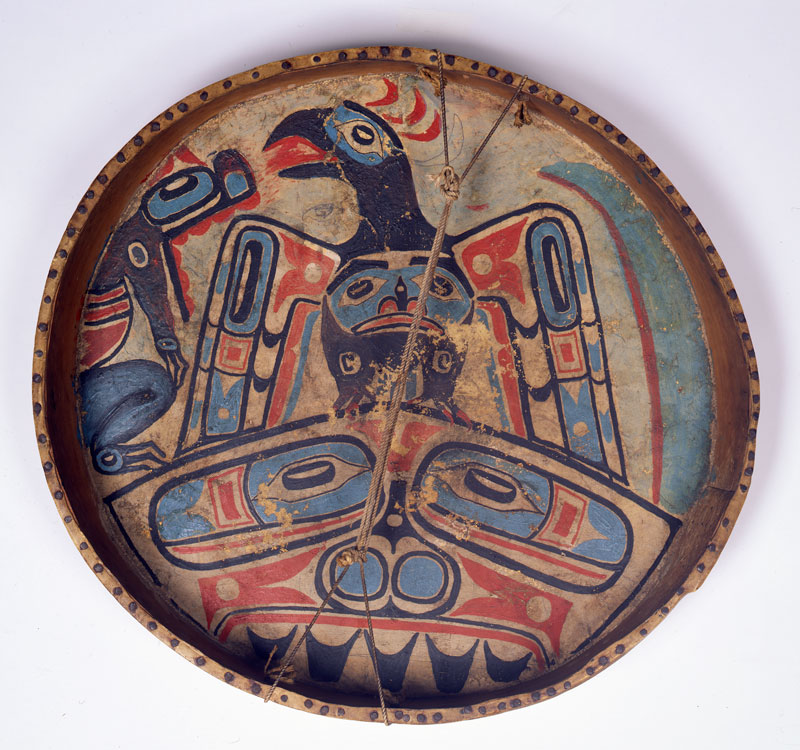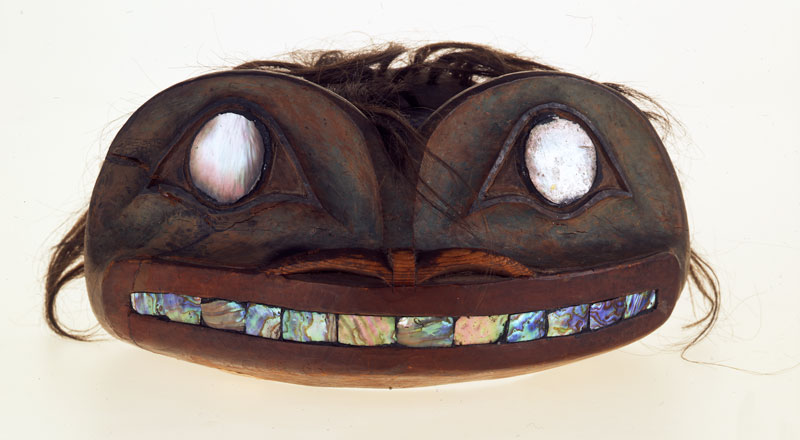Crests, or emblems, of Tlingit families and clans represent creatures with whom an ancestor has interacted in the legendary past. Through purchase by the ancestor, often in exchange for his or her life, the descendants receive from the creature the right of ownership of the crest and the accompanying story, song, name, and sometimes more.
Community memory is embedded in the heirlooms that display the crests. Crests don’t “tell a story,” but rather they allude or refer to stories already known, in much the same way a Christian cross does not “tell” the Christmas or Easter “story,” but alludes to an entire spiritual tradition, says Tlingit Nora Marks Dauenhauer. Relatives identify with the objects through their genealogical connection and keep track of who has possession of the heirlooms now, who had them in the past, and who will have them in the future. Genealogy holds the system together, says Dauenhauer.
When used in ceremonies, the crest treasures refer to the ancestral spirits and even call upon the spirits represented for healing, courage, strength of purpose, and assistance in the removal of grief. When Tlingit people wear items that contain the crests, they are in the presence of their ancestors.

Tlingit peoples, Alaska, pre-1949
Rawhide, yellow cedar? (Chamaecyparis nootkatensis). Mineral? Paints, iron, commercial cotton; H 10.0 x D 74.0 cm; 24386-34, gift of Dr. Oshin Agathon
This drum has a painted image of either a thunderbird or a Golden Eagle on its interior, where the painting is protected from the beating of the drumstick.

Tlingit peoples, Alaska, collected 1904
Red alder (Alnus rubra) or maple (Acer sp.), hair, abalone (Haliotis sp.) shell, laundry blueing, natural paints; L 17.0 x W 22.7 x H 12.5 cm; 3178-25
Several clans of the Raven moiety use the frog as one of their crests. This forehead mask could have been made for any of them. Although called a frog, this image is likely that of Bufo boreas borea, a toad common to the Tlingit region.
Raven and Eagle Clans
Tlingit society is divided into two halves, or moities, named the Ravens and the Eagles. Every Tlingit person belongs to one side or the other. Within each moiety, there are many clans. Some of the clans of the Raven moiety include the Frog, Goose, Owl, Raven, Salmon, and Sea Lion. Clans of the Eagle moiety include the Auk, Bear, Eagle, Shark, Whale and Wolf.
Other Northwest Coast cultures have similar and equally complex social structures, some with two divisions and some with more.
